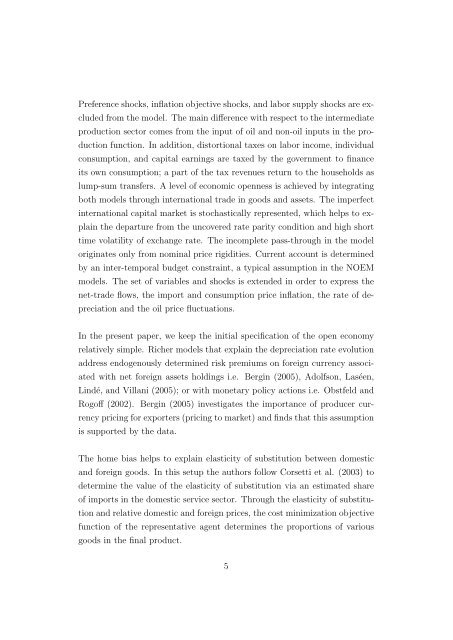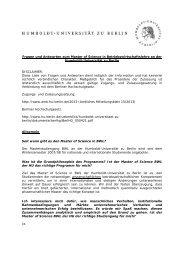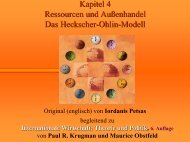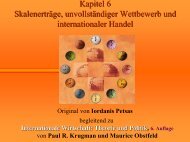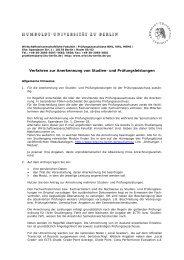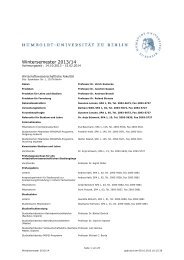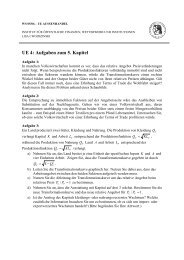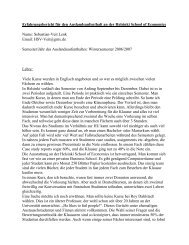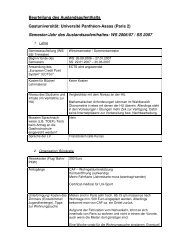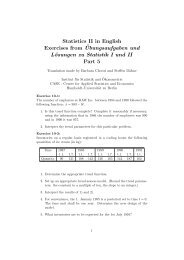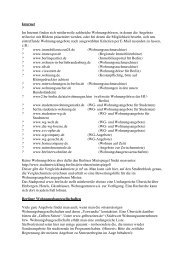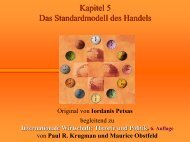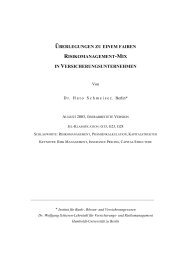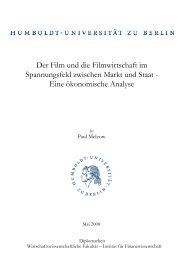Master Thesis - Humboldt-Universität zu Berlin
Master Thesis - Humboldt-Universität zu Berlin
Master Thesis - Humboldt-Universität zu Berlin
Create successful ePaper yourself
Turn your PDF publications into a flip-book with our unique Google optimized e-Paper software.
Preference shocks, inflation objective shocks, and labor supply shocks are excluded<br />
from the model. The main difference with respect to the intermediate<br />
production sector comes from the input of oil and non-oil inputs in the production<br />
function. In addition, distortional taxes on labor income, individual<br />
consumption, and capital earnings are taxed by the government to finance<br />
its own consumption; a part of the tax revenues return to the households as<br />
lump-sum transfers. A level of economic openness is achieved by integrating<br />
both models through international trade in goods and assets. The imperfect<br />
international capital market is stochastically represented, which helps to explain<br />
the departure from the uncovered rate parity condition and high short<br />
time volatility of exchange rate. The incomplete pass-through in the model<br />
originates only from nominal price rigidities. Current account is determined<br />
by an inter-temporal budget constraint, a typical assumption in the NOEM<br />
models. The set of variables and shocks is extended in order to express the<br />
net-trade flows, the import and consumption price inflation, the rate of depreciation<br />
and the oil price fluctuations.<br />
In the present paper, we keep the initial specification of the open economy<br />
relatively simple. Richer models that explain the depreciation rate evolution<br />
address endogenously determined risk premiums on foreign currency associated<br />
with net foreign assets holdings i.e. Bergin (2005), Adolfson, Laséen,<br />
Lindé, and Villani (2005); or with monetary policy actions i.e. Obstfeld and<br />
Rogoff (2002). Bergin (2005) investigates the importance of producer currency<br />
pricing for exporters (pricing to market) and finds that this assumption<br />
is supported by the data.<br />
The home bias helps to explain elasticity of substitution between domestic<br />
and foreign goods. In this setup the authors follow Corsetti et al. (2003) to<br />
determine the value of the elasticity of substitution via an estimated share<br />
of imports in the domestic service sector. Through the elasticity of substitution<br />
and relative domestic and foreign prices, the cost minimization objective<br />
function of the representative agent determines the proportions of various<br />
goods in the final product.<br />
5


